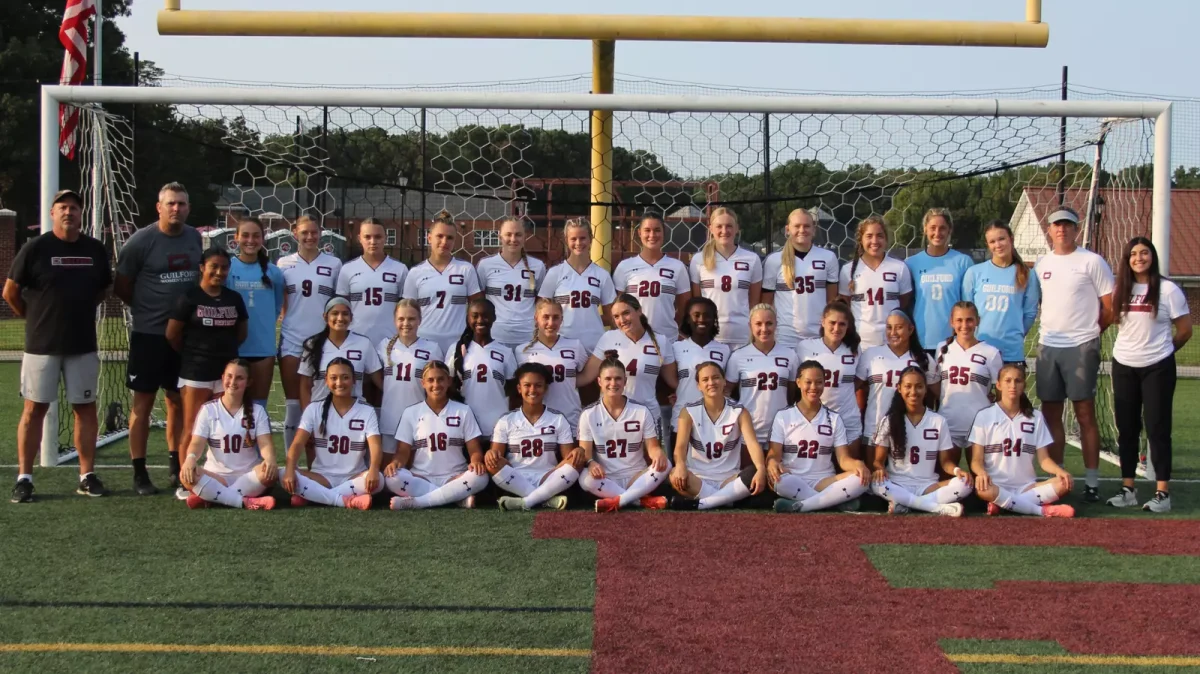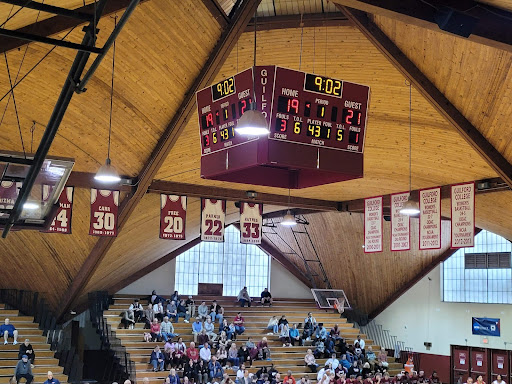The sweaty life of the Division III athlete isn’t as majestic as it appears. Hours of blocks, tackles and passes are most commonly followed by an equal amount of time locked in the library. Food, friends and fun sometimes take the backseat for the main two priorities: school and athletics.
“Practice lasts anywhere from two and a half to three and a half hours,” said sophomore football player Daniel McFaddin.
“I devote most of my time to my sport and my school,” said sophomore soccer player Christopher Gillespie. “I have mandatory study halls, I go to practice and have team meetings –– along with going to class and hanging out with my friends.”
The drastic amount of time centered on athletics makes it difficult to balance each component of the day without commitment and planning.
“Sports take up at least three hours every week day, and depending on class schedules, it can really cut into time spent studying, doing homework or meeting with teachers,” said first-year volleyball player Aly Haslam.
“Being a student athlete entails perfect time management because I need to be able to balance school, work and lacrosse,” said junior women’s lacrosse player Elizabeth Carella.
This often sparks a boring routine where each day is the same.
“My days always feel like classes, then practice, dinner, then homework, then bed,” said junior football player Daniel Nolan.
Off-season does not guarantee a plethora of free time. Structured practices are substituted with individual workouts and random team play.
“Being in off-season for lacrosse right now, it’s a lot of working out, running and doing stick work on your own,” said sophomore lacrosse player Chase Rogers. “It’s all about having the drive within yourself to make yourself that much better.
“That much better is one more sprint, one more lift in an exercise and always trying to do one more than you think you should.”
“There are highly encouraged, player-led workouts that condition us for spring practice,” said senior football player Daniel Biggerstaff. “Spring season is two and a half to three weeks of non-padded practice that focuses on technique and conditioning.
“We also have summer workouts that get us physically prepared for camp, during which we have to pass a conditioning test.”
The prize for lackluster days and missing chunks of time: representing Guilford thletics, being an active part of the Guilford community and living part of a personal dream.
“You just are more in the loop,” said Gillespie. “You are able to meet more people as an athlete, and through that you are more connected to the student body, which keeps you well connected with teachers as well.”
“Being an athlete gives you so much more than just going to school: you represent Guilford Athletics, you’re actually part of the school and you give yourself dedication for a bigger cause,” said Rogers.
“It’s always been my dream to become a college football player and Guilford College has given me that chance,” said Nolan.
“I love every day of it and can’t wait till next season. The extra load is worth the experience of living your dream.”
Division III athletes sacrifice most of their day to their athletic and scholarly duties. Weekdays become mundane and the off-season offers little sympathy.
However it’s all worth it to be a greater part of the Guilford community and uphold your personal desires.
Categories:
The routine hustle-bustle life of the D-III student athlete
1
0
Tags:
More to Discover







ZMII • Nov 16, 2012 at 3:24 pm
Good article. There is one quote that bothers me as a Guilford student though…“ … you’re actually part of the school and you give yourself dedication for a bigger cause,” said Rogers.”
It seems that Rogers infers that being a non-student-athlete causes students to NOT be a part of the college and dedicated to more structured interactions. Aren’t Guilford students, whether traditional, CCE or middle college, still an “actual part” of the college? Quaker students contribute to the college in a plethora of other ways that are recognized such as work-study, volunteerism, tutoring as well as working in the surrounding communities to spread Quakerism that make them “actually part of the school” and provides them “dedication for a bigger cause” as well.
Thanks for your time.
ZMII